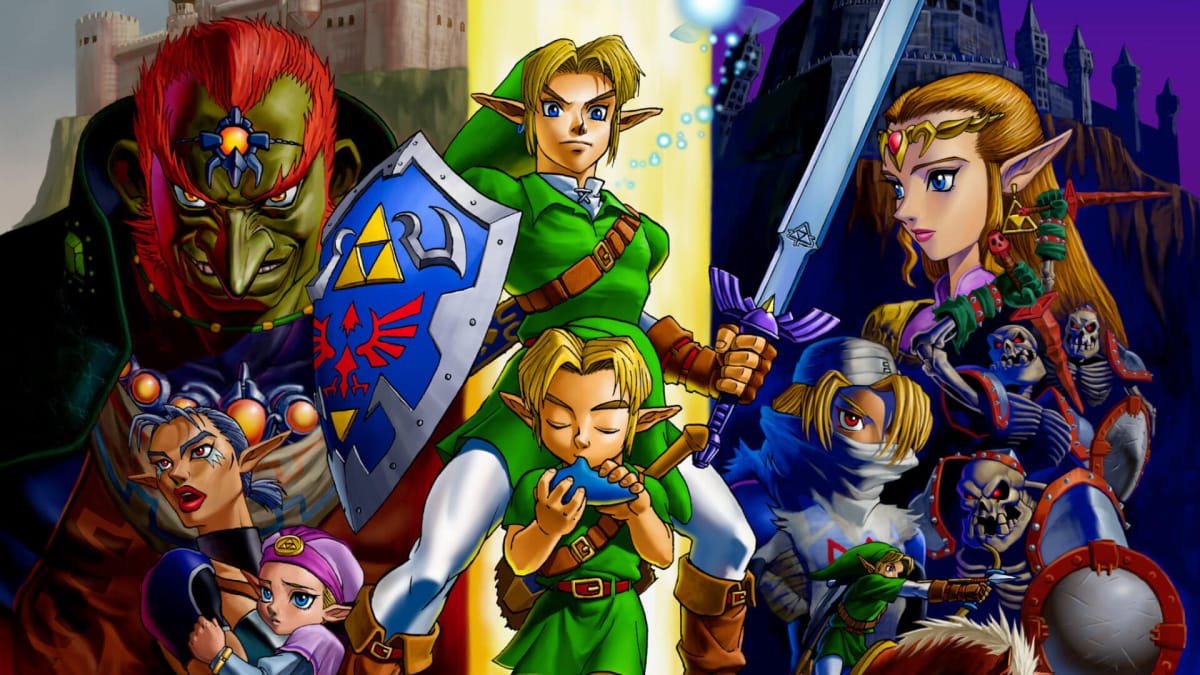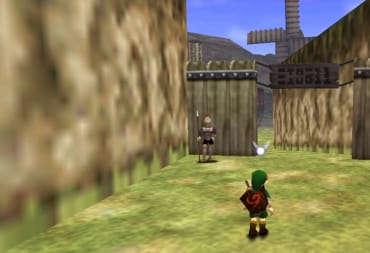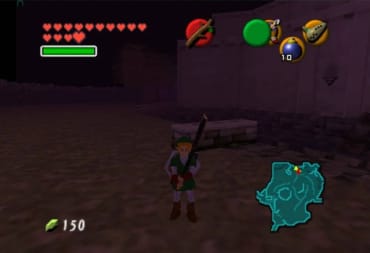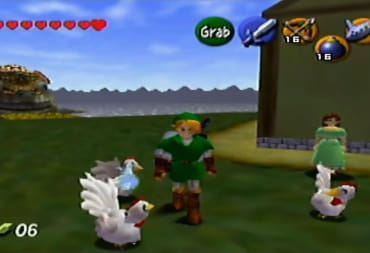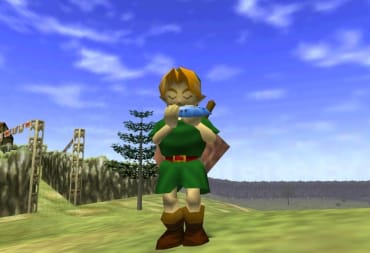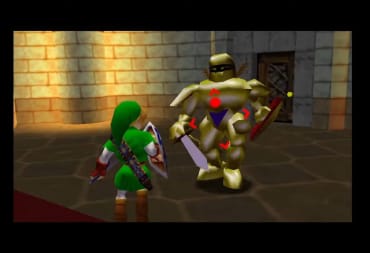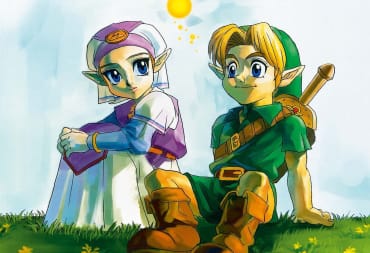Last time, we looked into the exhaustive development of Zelda 64 through Stage 1 and Stage 2 of the game's life, going into the limitations of the 64DD, the growing press buzz, and the beginnings of early internet urban legends. This time, we will be going into the most extensive development time of Zelda 64: Stage 3 (A+B+C Beta) from August 1997 to August 1998.
Did you miss the first part of this series? Start from the beginning here.
256 Megabits
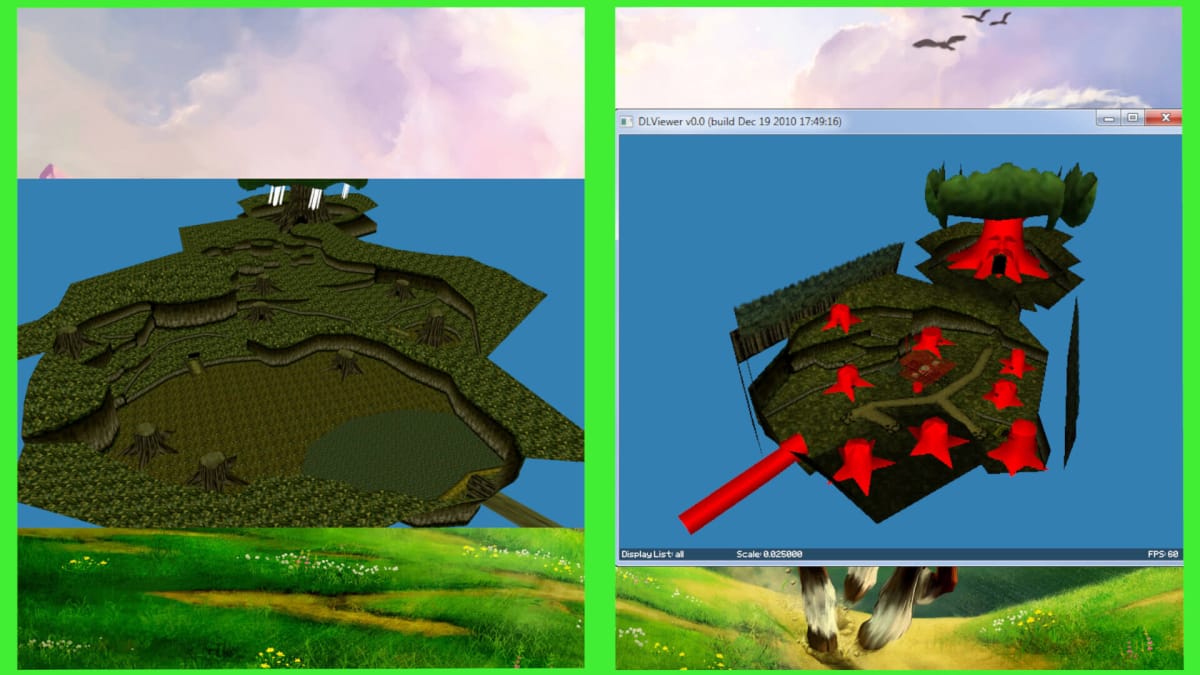
By the time Zelda 64 was in Stage 3 of development, more of the game's environments and design was beginning to be finalized. The sheer size of the game—previously reported to be 128 megabits in July of 1997—made it one of the largest cartridge-based games for the Nintendo 64 at this time.
Less than a month later, in August 1997, it was announced that the game would fit up to 256 megabits, making it the largest known cartridge-based title for the Nintendo 64 at the time. Some early websites, such as IGN, speculated that the extra megabits would allow for FMV sequences, digital speech, or “good old fashioned quality gameplay.”
The focus on this high-end power often led to rumors of what Nintendo was planning, but the truth was that Zelda 64 was going through extensive re-working after it was moved off the 64DD. Previously planned maps were beginning to be downsized, likely rescaled to fit into the space of the cartridge at this point to include as much detail as possible. Some of this can be seen by the relative sizes of Stage 1 and Stage 2 maps, in particular those found in the Spaceworld 1997 Overdump and the Gigaleak.
The original size of Kokiri Forest, for example, is more than double the map size as the final version released. As seen in this restoration of the map by z64me. Numerous details, such as the carvings along Link’s treehouse and the looming treetop of the Great Deku Tree, are more detailed and less obscured or downgraded in terms of pixel quality. It is very likely that the shift to the regular Nintendo 64 from the 64DD would see every map in the game, with few exceptions, slowly downsized to fit into the 256 megabits.
Another culprit of this would be the use of pre-rendered backgrounds. Previous builds had Nintendo create polygonal backgrounds for indoor locations, including furniture that you wouldn’t be able to interact with. The limitations on the cartridge would eventually lead to extensive use of pre-rendered backgrounds and camera tricks, such as overhead angles, fish-eye camera movements, and fixed camera angles to give multiple environments life. The city of Hyrule and the Temple of Time are perhaps the biggest examples of pre-rendered background use, eliminating the entire interactive map of the castle town previously seen in older screenshots and videos.
Narrative Shifts
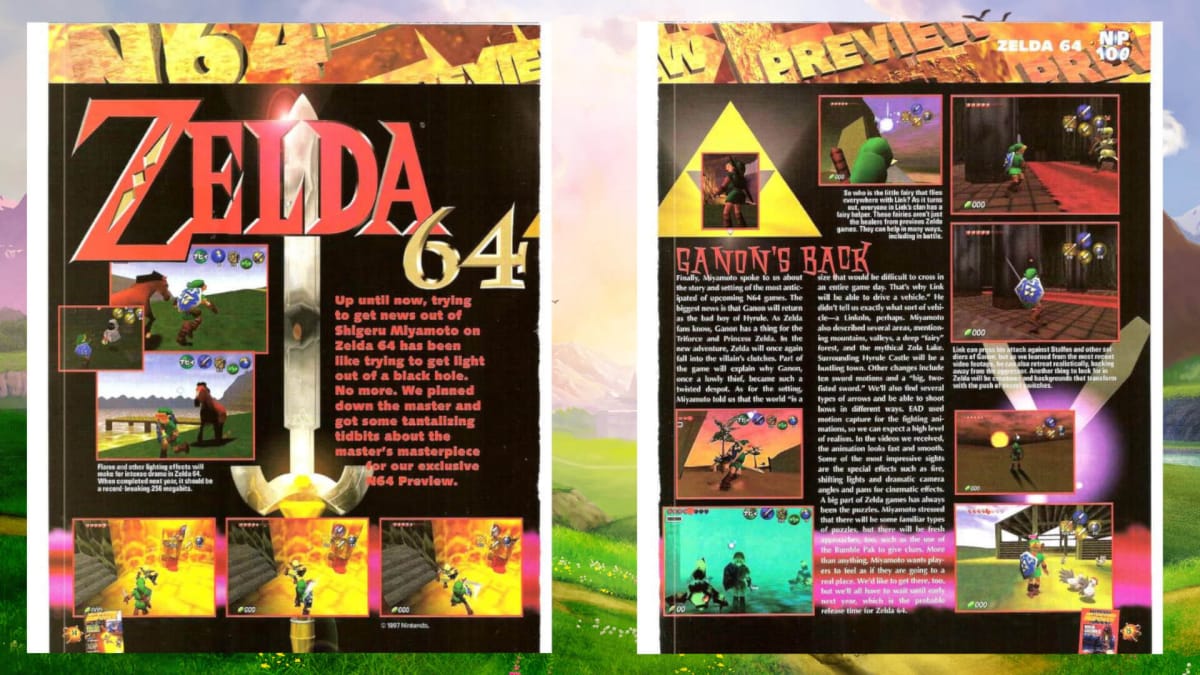
Magazines, such as Nintendo Power #100, were also beginning to bring forth a few new story elements (as well as mixing screenshots between Stage 2 and 3) around this time as well.
The focus at this time was less gameplay and more narrative, at least to the press. Previously, virtually nothing has been known about the story or themes of Zelda 64, other than it would take place after Zelda II. That would then be changed, with the focus now upon the threat to Zelda and Link: Ganon.
By this stage of development, writer and director Toru Osawa had already devised some of the narrative beats thanks to the inclusion of Navi. Osawa noted that justifying Navi as a character (as opposed to a game tool) became the early focus, including starting the game in Kokiri Forest (the idea that the Kokiri have companion fairies assigned to them) and, most notably, the creation of the fairy items (the Fairy Bow, the slingshot, and eventually, a Fairy Ocarina).
The inclusion of Ganon, and making him a more complex villain, became an early talking point that would see Ganon becoming a thief that would steal the Triforce and kidnap Zelda.
The earliest story bits revealed were around September 1997, with most of the bullet points coming from various websites including a posted synopsis from Nintendo around this time. It would be the first official synopsis of Zelda 64 by Nintendo.
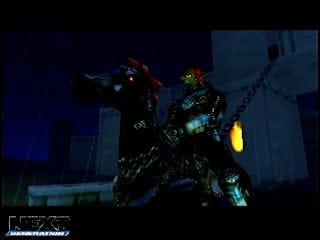
Firstly, the synopsis mentions that the game takes place in the past, with Link possibly being an ancestor to the Link from Super Nintendo or the Game Boy. According to the synopsis, Link is preparing for a coming-of-age ceremony where he receives his guardian spirit, along with a fairy from the Fairy Tree when they reach adulthood. The ceremony, however, is interrupted when The Fairy Tree, the source of the guardian spirits, is captured by a strange creature from the depths of the forest. With the help of ‘Navie’ (possibly a mistake or mistranslation), Link slays the creature, but the Fairy Tree is slowly dying. The tree tells Link the following:
"Do not allow the thief, Ganondorf, to claim the Triforce..." the Tree mystically communicates. "Oh brave one, you must take this sacred stone to a wise man..."
At this stage of development, Ganondorf was known as the king of thieves who was actively after the Triforce. Link would travel to Hyrule Castle to warn the king, but he meets with Princess Zelda, who gives Link details to find the sacred stones that fit into a magical Ocarina, the key to the hidden realm where the Triforce is kept. The crux of the game would then be a race between Link and Ganondorf to the hidden realm to uncover the Triforce.
This is notably the first time the magical Ocarina was ever mentioned in print, but also directly hints at its original use: being a gateway to this hidden realm in the same vein as A Link to the Past. The narrative itself would go through numerous rewrites, even months before the game is released in Stage 4 of development, but the key story beats are almost the same. Link comes of age, saves the Fairy Tree (Deku Tree) from a strange creature, and is named a guardian to stop Ganondorf the thief from claiming power for himself.
The biggest differences, ultimately, would be how the story beats would change when child Link is introduced.
Child Link and Shifting Directions
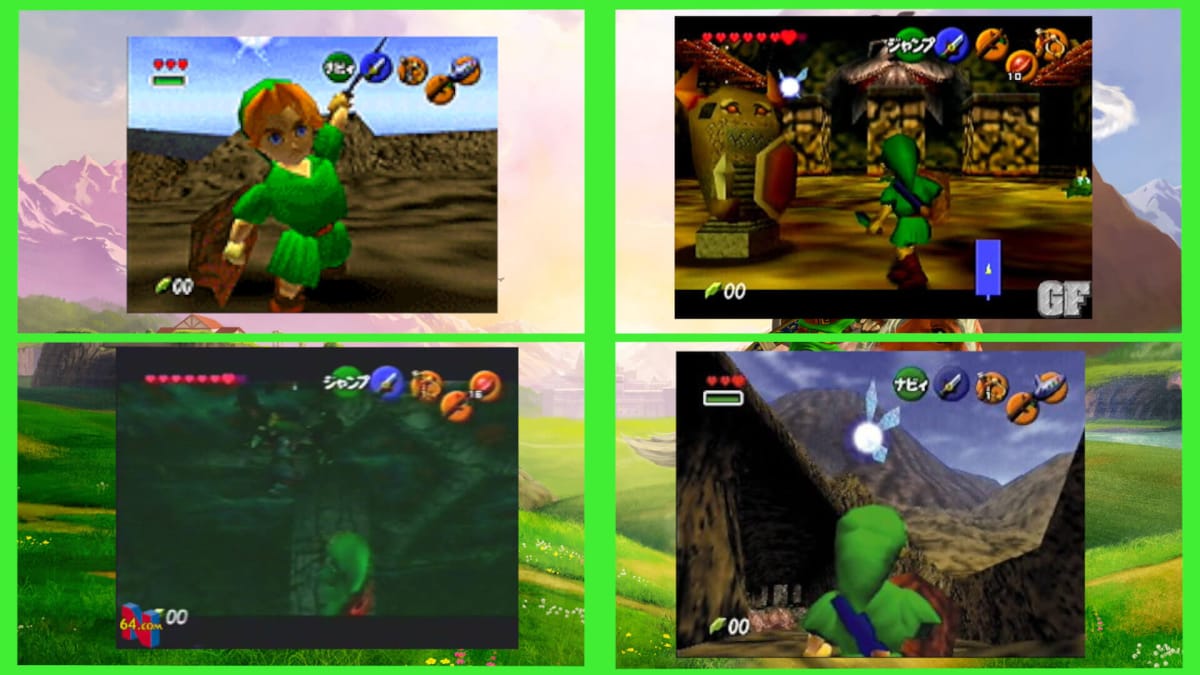
Character designer Yoshiaki Koizumi noted that the team didn't determine most of the settings in Zelda 64 at first, the beginning, but rather just made them up as they went. However, as the story was taking place, these locations would slowly take on a specific shape.
This would all change thanks to Shigeru Miyamoto, along with other staff members arguing that a younger, child-like Link would be an interesting concept to bring to the table. By this point, the more adult Link was pretty recognizable, so it became a question of how to include both into the game at once. It’s unknown who came up with the idea of child Link or time traveling, but one of the images conceived was Link drawing the Master Sword to travel into the future.
By this point, most of Nintendo EAD, the team developing Zelda 64, was working on the game almost around the clock. New internal character artwork, however, would begin to show the shift to this new design paradigm. This piece of art was never shown to the public until the Hyrule Historia.
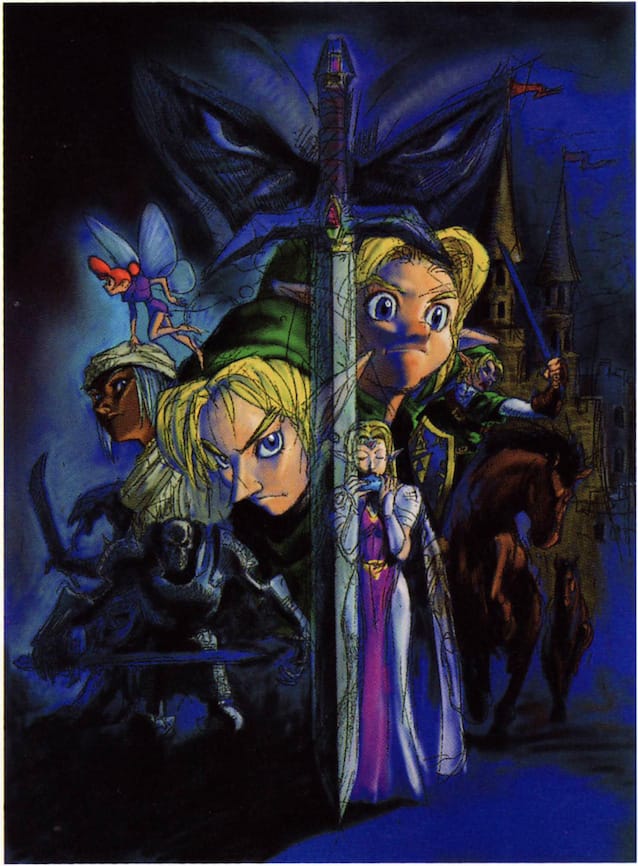
The art is believed to be one of the first unofficial drawings of child Link, Ganondorf, adult Princess Zelda, Sheik (here a separate character from Zelda), and a more human-shaped Navi. The art also contained a mix of Stage 2 and Stage 3 characters, such as the original Stalfos design, and one of the first drawings of Epona, who was briefly seen as a horse in screenshots around this time. Finally, the artwork would depict both the Ocarina of Time and the Master Sword, both of which would become iconic elements of Ocarina of Time.
The first screenshots of child Link would not be seen until October 1997. It was at this point, several areas and dungeons that originally contained the adult Link would be switched over to child Link. This would include the dungeon that was the furthest along in development—namely Dodongo’s Cavern—and the Gohma boss fight in what would become the Great Deku Tree. Child Link would then be seen prolifically in screenshots from here on across locations seen in Hyrule.
Stage 3 of Development
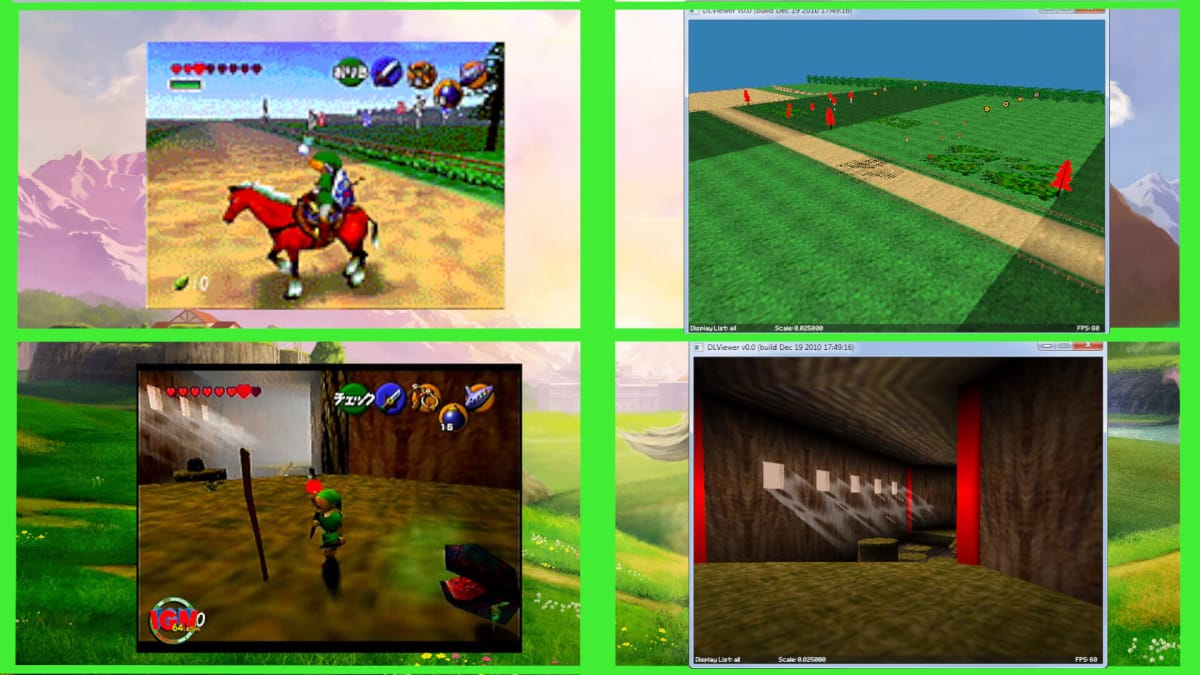
The inclusion of a child Link required a complete re-working of animations already in the game. Some would transition well from adult to child Link, others would have to be remade completely. Director Koizumi noted that a simple trick—applying a scale of a value to adult Link’s model—allowed most of the animations to be recalibrated for child Link, saving tons of time and development cost. This didn’t stop Koizumi from creating a reported 1.5 times the number of animations for child Link, pushing the game to contain over 500 animations patterns that would combine to form more actions for Link. The ROM cartridges are given credit for this, once again showing how the cartridge-based limitations were an asset for the development of Zelda 64.
By October 1997, much of what we see from Zelda 64 would be a number of changes here and there to maps, items, and animations. Child Link’s appearance was also a major surprise for news outlets, adding a whole new layer of discussion with a revamped storyline to accompany it. Much of the new focus was child Link in various locations and dungeons, the inclusion of Link’s arsenal, and some notes on the game's storyline.
At this point, the idea of getting the guardian stones and the Ocarina of Time (named around October 1997) was still the primary goal, but this now shifted to child Link over adult Link. The guardian stones were originally planned to be inserted into the Ocarina to activate its time-traveling capabilities. This is further corroborated by both the Debug Menu ROM and the Spaceworld 1997 Overdump, which showcases both text and the original designs of the guardian stones. A few screenshots from Stage 3 also show the Ocarina of Time with the stones inserted.
Spaceworld 1997 would be the major dump of information for the next few months, taking place in November of that year, Zelda 64, now finally named Ocarina of Time, offered a few options for players to test out and enjoy the game, which was playable to the public for the first time.
The choices included the Hyrule Tour, the Dungeon Tour, and the Battle Tour. The demo itself would be accompanied by the now famous cutscene of a young Princess Zelda being whisked away from Hyrule Castle, while Link watches on as Ganondorf enters the scene. This cutscene would be a favorite of Miyamoto’s, who is a big fan of film and anime. He credits the designers for being able to include what would amount to 1.5 hours of cutscenes into Ocarina of Time, though more were planned and even made but eventually scrapped due to Miyamoto late into development.
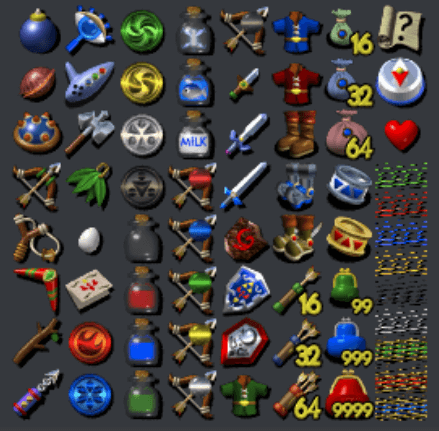
Based on one of the few surviving accounts from that time, the Hyrule Tour allowed players to go through four gameplay scenarios: Link’s House, the Hyrule overworld, a river area, and riding Link’s horse outside the castle. The Battle tour featured combat scenarios against two bosses—Gohma and King Dodongo—or a fight against several now-redesigned Stalfos. The last, and most mysterious, is the Dungeon Tour, which contained three dungeon scenarios which are not described in any full detail.
It is likely, however, based on the recently discovered overdump, that the three dungeons in question would be Dodongo’s Cavern, Inside the Deku Tree, and the Water Temple in their beta forms. Those are the only three full dungeons that would be discoverable from the map data, and in the case of the Deku Tree, it was a completely different dungeon at this time. On top of this, the boss battles of Gohma and King Dodongo also hint at their dungeons being in a more complete state at this point.
Other items developed and played with at this time including the use of magic and the different medallions. Early screenshots showed the Forest Medallion was equippable, and thanks to the Spaceworld Overdump, we now have the functions and elements of each medallion for the first time. Some, such as the wind and ice medallion, were well known before the overdump. Others are major surprises, most particularly the soul medallion, which would allow the player to control Navi.
It is speculated now that controlling Navi (possibly in first-person view) was designed specifically to reach hard-to-access areas for adult Link. There is no way to confirm this, but the current prevailing theory, at least among fans, is that the scarecrow’s song and Pierre the scarecrow were created in its place to allow Link to access shortcuts or secrets instead of using Navi.
The magic system was never fully revealed until late in Stage 3 of development, but outside of the forest medallion (named wind medallion in the data) and the magical bow, nothing else was seen in pre-release information. It is clear, however, that the magic spells of Din's Fire, Faore's Wind, and Nayru's Love replaced or altered some of the effects promised in the medallions.
Throughout 1998, Stage 3 of development dominated the press as more refined screenshots and elements would be seen. Beta versions of the game would slowly transform into their final counterparts, several areas would be revamped completely, and a few areas would be cut from the final game or altered significantly. By mid 1998, more press releases began showing a more complete picture of the game's narrative to the public.
By E3 1998, new enemies and bosses, notably Volvagia, Morpha, and Phantom Ganon, were shown for the first time, and Miyamoto was beginning to make the rounds in the press about the designs and ideas of Ocarina of Time in full force. It was at this time, Miyamoto noted that an expansion—now known today as Ura Zelda—would be released for the 64DD, a lingering albatross to Ocarina of Time that would only be answered in the next console generation.
But at this point, Ocarina of Time was in its final form… or at least, it was until August 1998, when Miyamoto would inform the team of several narrative changes that would refine the story and gameplay of Ocarina of Time even further than what was before.
The final stage of development would arguably be the most chaotic for Nintendo, with story and cutscene changes, fine tuning assets and placements, and getting to work on another title with half of the development time that Ocarina of Time had. Not to mention the promise of Ura Zelda and the lingering issues with the 64DD. All of this, however, will be covered in our final part of this saga tomorrow.
Have a tip, or want to point out something we missed? Leave a Comment or e-mail us at tips@techraptor.net
